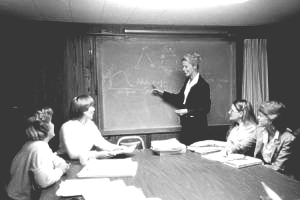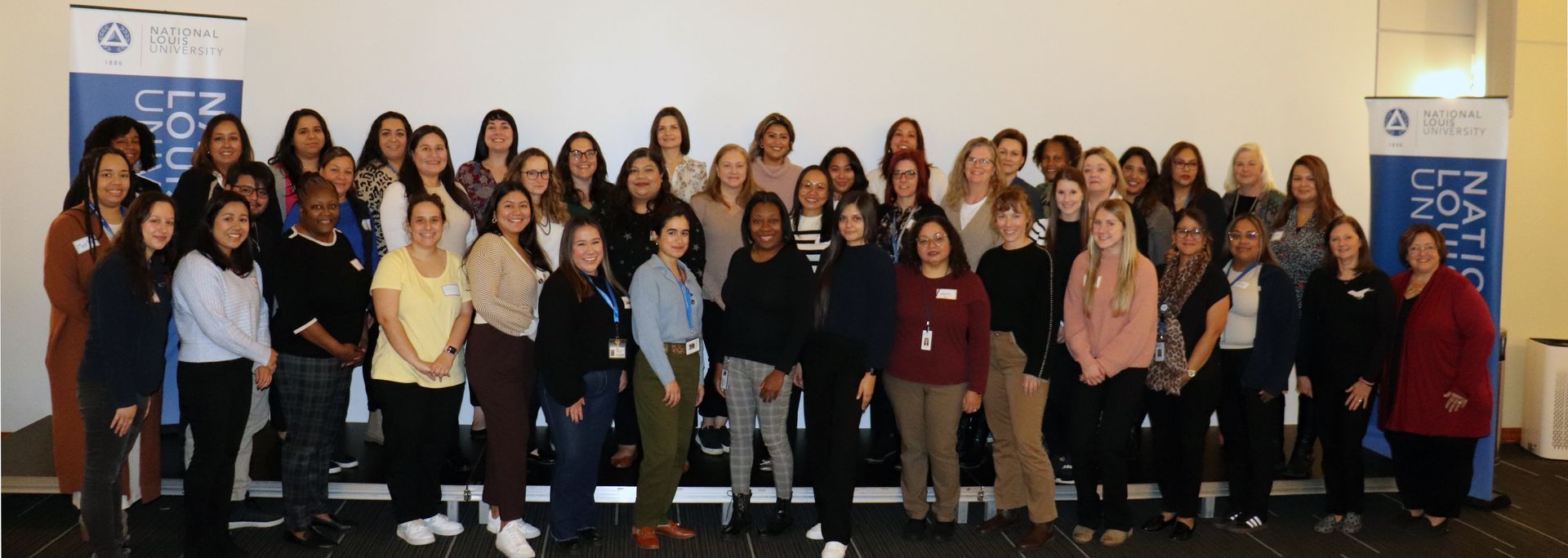This document may be printed, photocopied, and disseminated freely with attribution. All content is the property of the McCormick Center for Early Childhood Leadership.
As I watch my favorite television show, my attention is immediately drawn to the actors and actresses, and especially the lead performers, around whom the story is based. They are front and center, and rightly so. But what makes them shine? Certainly, it’s the result of much hard work on their parts, but there are many others working behind the scenes that also contribute to the show’s success—the writers, stage hands, choreographer, and the stage designer, among many. The show would not be successful without the producer working to make each of these components come together.
Similarly, a lot goes into formal family-teacher conferences in early care and education programs. When we think about family-teacher conferences, we most often think of the main characters—the families and the teachers. Both groups have dedicated substantial time and effort to make sure each conference is successful and productive. Teachers invest in preparing for conferences through observations, assessments, and sometimes portfolios for each child and family. Families prepare by making time to attend the conference, sharing their own observations about their child’s progress, asking questions, and setting goals for their child.
We are less likely, however, to think about the behind-the-scenes role of early childhood administrators and the part they play in ensuring that conferences are meaningful, productive, and uplifting. Using the same metaphor of a television show, here are some behind-the-scenes tasks that will help ensure successful conferences.
- Be intentional about timing.
The first decisions are how many conferences to have per year and when to have them. According to the Program Administration Scale: Measuring Whole Leadership In Early Childhood Centers (PAS), at the “good” level, the center will provide two formal conferences to discuss children’s learning and development per year at times that are convenient for working families. “Times convenient for working families” means being flexible and offering conferences outside of the center’s operating hours. In an ideal situation, programs will pay teachers or compensate them for their time for conferences outside of their scheduled hours. For conferences within center hours, extra staff (e.g., assistant directors, floating teachers, educational coordinators) might be scheduled to cover the classroom while the teacher is in conferences. Other options to increase family participation include scheduling virtual meetings or holding conferences off-site. Also, the earlier you let families and teachers know the timeframe of the conferences, the better chance they have to accommodate the schedule.
- Provide clear expectations.
Teachers: If teachers are your lead actors, making sure they are able to express the program’s overall goals to families is important. Questions you might consider providing answers to include: Is there a conferencing format that all teachers use, individualized for each child? Do teachers know where conferences will be held and how long they will last? What is the policy and flexibility allowed for conferences scheduled outside of teachers’ scheduled hours? Do others (e.g., another teacher, health consultant, director) need to be involved? What type of follow-up from each conference is expected?
Families: Think of families as another main character who is critical to the success of the conference. How do you “advertise” to get them to show up? Are your conferences at times that are convenient for them to attend? Do they have a part in the conference? Who can attend the conference—only parents, or can another family member or friend attend as well? Can they bring their child or children? Is child care provided? Do they know what will be covered, and if they have specific concerns, will they be addressed at this time, or should they schedule another time to talk? Informing families ahead of time through the parent handbook, newsletter, emails, or via communication apps will help ensure the success of the conference.
- Be mindful of space and location.
Typically, conferences are held at the child care center but, as mentioned above, some conferences might be held off-site, or via Zoom or FaceTime. Wherever they are held, conferences need to be in quiet, comfortable places, free from distractions, so that information and conversations will be private and confidential. In preparation for conferences, think about what you can do to make the space comfortable for teachers and families. If possible, have adult-sized seating and a table so children’s work and notes can easily be shared with families. Arrange chairs around a table to create a friendly atmosphere. Use children’s artwork, flowers, or other simple things to make the space welcoming. Offer water or coffee to drink and a comfortable, conversation-like atmosphere whenever possible.
- Continue the conversation.
Families: A good television show leaves you hungry for more. That is how we can think of conferences as well. A good conference experience leaves teachers and families with a renewed sense of excitement and a desire to keep communicating. Has the teacher asked the family about the best way to stay in touch with them? Is it email, text, notes home, face-to-face? Let families know that the program wants to keep in touch, and share with them that the program views conferences as just one piece of an ongoing, collaborative relationship.
Teachers: After the productions (conferences) are over, carve out time for staff to reflect on how they went. Ask teachers to journal or discuss with their peers or supervisors what went well, ideas for future improvements, as well as how to continue to develop two-way communication with families. Be sure to show your appreciation for their dedication and commitment to working closely with the families in your program.
SELF-REFLECTION
As you begin a new school year, what are some additions or programmatic changes you might make to help assure that conferences are one of many practices you implement to foster healthy communication between families and teachers?
Are you interested in learning more about the PAS or our other program evaluation and support tools? The McCormick Center has a wide selection of professional development opportunities designed to meet the needs of center-based administrators, family child care providers, and those in technical assistance roles. Click here to learn more or contact us at PAS.BAS@nl.edu.
REFERENCES AND RESOURCES
Couchenour, D. L., & Chrisman, K. (2004). Families, Schools, and Communities: Together for Young Children (2nd ed.). Delmar Learning.
Keyser, J. (2017). From parents to partners building a family-centered early childhood program. Redleaf Press.
Talan, T. N., Bella, J. M., & Bloom, P. J. (2022).
Program Administration Scale: Measuring Whole Leadership in Early Childhood Centers (3rd ed.). Teachers College Press.
Paula Steffen, M.Ed., is a Quality Training Specialist for the McCormick Center for Early Childhood Leadership at National Louis University. In this role, she serves as a National Anchor for the Program Administration Scale (PAS) and Business Administration Scale for Family Child Care (BAS). Previously she served as a State Assessor conducting assessments using the PAS, BAS, Classroom Assessment Scoring System (CLASS), and Environment Rating Scale (ERS) tools for ExceleRate – Illinois’ Early Childhood Quality Rating and Improvement System. In addition, she was the Illinois State Assessor Anchor for the PAS, BAS, and Infant Toddler Rating Scale (ITERS). Prior to joining the McCormick Center in 2007, Paula was the Professional Development Manager for Illinois Network of Child Care Resource and Referral Agencies, co-owned a child care center, and worked as a director and professional development advisor in both Head Start and community college-based programs.






